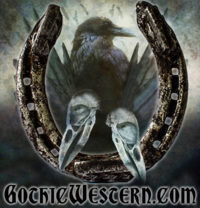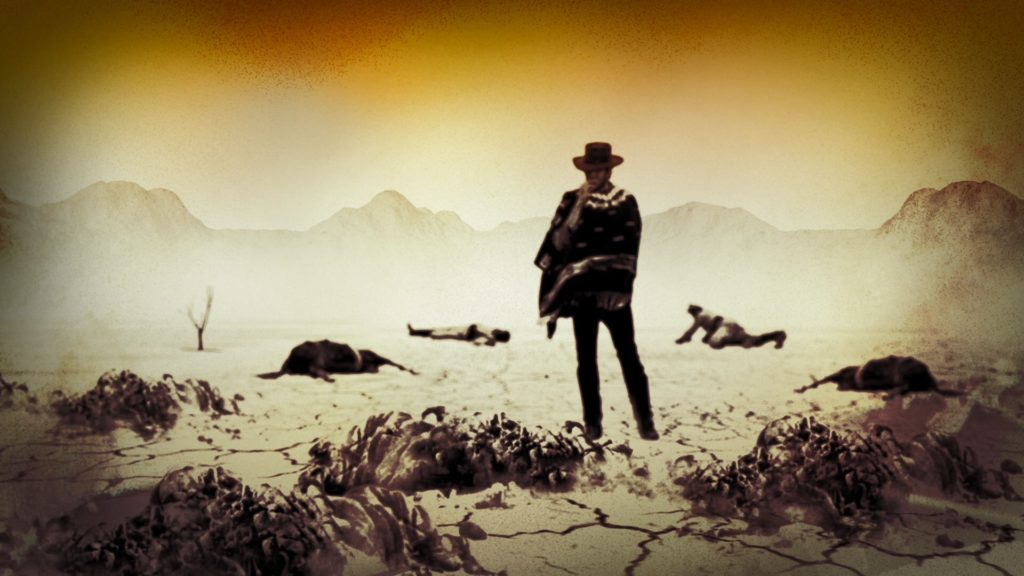We continue with part two of the series of articles about the background of Sergio Leone’s “Dollars Trilogy”, which is one of the original instances of gothic cowboy in film.
Clint Eastwood was not the first actor approached to play the main character. Originally, Sergio Leone intended Henry Fonda to play the “Man with No Name.” However, the production company could not afford to employ a major Hollywood star. Next, Leone offered Charles Bronson the part. He, too, declined, arguing that the script was bad. Both Fonda and Bronson would later star in Leone’s Once Upon a Time in the West (1968). Other actors who turned the role down were Henry Silva, Rory Calhoun, Tony Russel, Steve Reeves, Ty Hardin, and James Coburn. Leone then turned his attention to Richard Harrison, an expatriate American actor who had recently starred in the very first Italian western, Duello nel Texas. Harrison, however, had not been impressed with his experience on that previous film and refused.
When the film was released on the televised network ABC on 23 February 1975, a four and a half minute prologue was added to the film to contextualise the character and justify the violence. Written and directed by Monte Hellman, it featured an unidentified official (Harry Dean Stanton) offering the Man With No Name a chance at a pardon in exchange for cleaning up the mess in San Miguel. Close-ups of Eastwood’s face from archival footage are inserted into the scene alongside Stanton’s performance. This prologue opened television presentations for a few years before disappearing; it reappeared on the Special Edition DVD and the more recent Blu-ray, along with an interview with Monte Hellman about its making.
The film was effectively an unofficial and unlicensed remake of Akira Kurosawa’s 1961 film Yojimbo (written by Kurosawa and Ryūzō Kikushima), lifting traditional themes and character tropes usually typified within a Jidaigeki film. Kurosawa insisted that Leone had made “a fine movie, but it was my movie.” Leone ignored the resulting lawsuit, but eventually settled out of court, reportedly for 15% of the worldwide receipts of A Fistful of Dollars and over $100,000.
British critic Sir Christopher Frayling identifies three principal sources for A Fistful of Dollars: “Partly derived from Kurosawa’s samurai film Yojimbo, partly from Dashiell Hammett‘s novel Red Harvest (1929), but most of all from Carlo Goldoni’s eighteenth-century play Servant of Two Masters.” Leone has cited these alternate sources in his defense. He claims a thematic debt, for both Fistful and Yojimbo, to Carlo Goldoni’s Servant of Two Masters—the basic premise of the protagonist playing two camps against each other. Leone asserted that this rooted the origination of Fistful/Yojimbo in European, and specifically Italian, culture. The Servant of Two Masters plot can also be seen in Hammett’s detective novel Red Harvest. The Continental Op hero of the novel is, significantly, a man without a name. Leone himself believed that Red Harvest had influenced Yojimbo: “Kurosawa’s Yojimbo was inspired by an American novel of the serie-noire so I was really taking the story back home again.”




